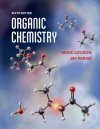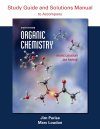About this book
Loudon and Parise's Organic Chemistry is known for its clear writing, high standard of accuracy, and creative problems. This edition contains over 1,800 problems – many of them new and taken directly from the scientific literature. Organic Chemistry is used at a wide variety of schools, such as UC Berkeley, Caltech, Colorado, Cornell, Duke, Harvard, Illinois, Maryland, Purdue, Yale, Wisconsin, and many more. This edition provides students with more health examples drawn from modern medical practice, as well as many cutting-edge topics from modern synthetic organic chemistry.
In addition to the printed book, students can rely on Sapling Learning's online homework platform for extra learning and assessment. The platform offers automatic grading, an easy-to-use interface, and instructive feedback. Instructors can select from a variety of existing problem sets – over 1,000 of Loudon's problems are in the platform! – or they can modify the questions or author them from scratch. Not only does the software allow students to easily draw and interact with structures, it allows them to draw entire reaction mechanisms, including showing the movement of electrons with curved electron arrows.
Contents
1. Chemical Bonding and Chemical Structure
2. Alkanes
3. Acids and Bases. The Curved-Arrow Notation
4. Introduction to Alkenes: Structure and Reactivity
5. Addition Reactions of Alkenes
6. Principles of Stereochemistry
7. Cyclic Compounds: Stereochemistry of Reactions
8. Noncovalent Intermolecular Interactions
9. The Chemistry of Alkyl Halides
10. The Chemistry of Alcohols and Thiols
11. The Chemistry of Ethers, Epoxides, Glycols, and Sulfides
12. Introduction to Spectroscopy: Infrared Spectroscopy and Mass Spectrometry
13. Nuclear Magnetic Resonance Spectroscopy
14. The Chemistry of Alkynes
15. Dienes, Resonance, and Aromaticity
16. The Chemistry of Benzene and its Derivatives
17. Allylic and Benzylic Reactivity
18. The Chemistry of Aryl Halides, Vinylic Halides, and Phenols. Transition-Metal Catalysis.
19. The Chemistry of Aldehydes and Ketones. Carbonyl-Addition Reactions.
20. The Chemistry of Carboxylic Acids
21. The Chemistry of Carboxylic Acid Derivatives
22. The Chemistry of Enolate Ions, Enols, and a,b- Unsaturated Carbonyl Compounds
23. The Chemistry of Amines
24. Carbohydrates
25. The Chemistry of Thioesters, Phosphate Esters, and Phosphate Anhydrides
26. The Chemistry of the Aromatic Heterocycles; DNA
27. Amino Acids, Peptides, and Proteins
28. Pericyclic Reactions
Customer Reviews
Biography
Marc Loudon is the Cwalina Distinguished Professor of Medicinal Chemistry at Purdue University. His teaching awards include the Clark Teaching Prize (at Cornell), Purdue’s School of Pharmacy's Henry Heine Outstanding Teacher Award (1980 and 1985), the Class of 1922 Helping Students Learn Award, the Charles B. Murphy Award, membership in the Teaching Academy of Purdue and listing in Purdue’s permanent “Book of Great Teachers”, and designation as the Carnegie Foundation “Indiana Professor of the Year”. Most recently, Dr. Loudon has been involved in chemistry curriculum re-design for life-science majors and pre-health profession students with the NEXUS program of the Howard Hughes Medical Institute.
James Parise is a Teaching Professor in the Department of Chemistry and Biochemistry at the University of Notre Dame, where he lectures organic chemistry. Previously, he taught and coordinated organic chemistry laboratories at Duke University. Dr. Parise’s research interests include development of more effective teaching methods for large lecture courses and improving organic chemistry pedagogy in both the classroom and laboratory. He administers an instructor-training program in organic chemistry and is currently developing auxiliary courses aimed at supplementing student preparation for introductory organic courses.


































